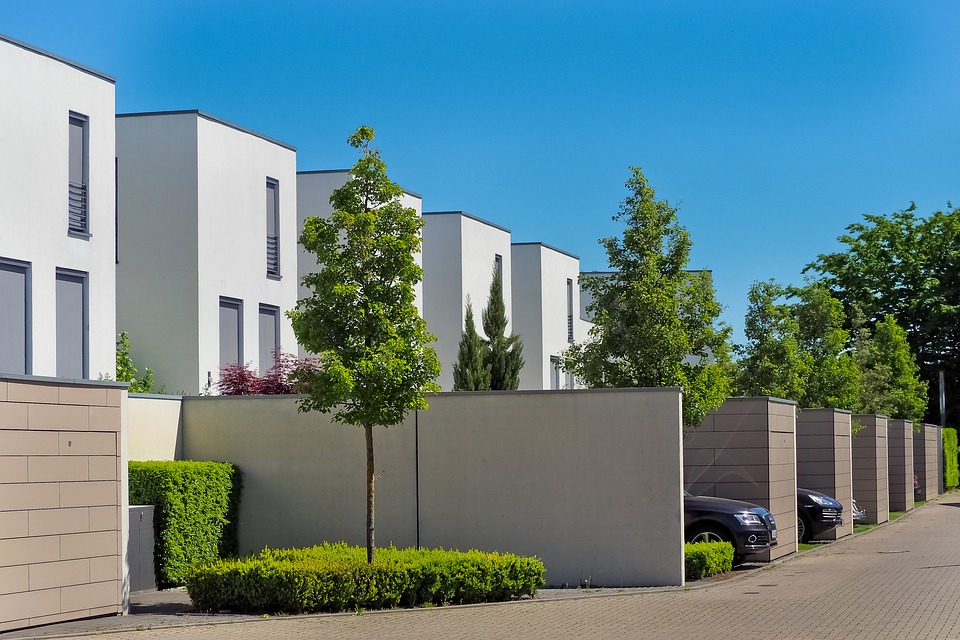
Concrete is the most important material in the construction of buildings, dams, sewerage systems etc. It is easy to cast and has a low manufacturing cost. Different types of concretes are used according to the requirement of the structure. Concrete shows high compressive strength and is reinforced with steel bars to bear the tensile load.
It is the most important material used in construction. Concrete is composed of Portland cement, fine aggregate (sand) and coarse aggregate (gravel). These components are bound together by water. The word concrete is originated from the Latin word “concretus” which means compact.
Components of Concrete
- Cement: Cement is the basic component of concrete. Usually, Portland cement is used in the making of concrete
- Aggregate: Fine and coarse aggregates are used to make concrete. The aggregate is classified as coarse or fine on the basis of their size. The coarse aggregate of even size leaves gaps that are filled by fine aggregates.
- Water: Water is added to the cement to make the cement paste. The paste acts as an adhesive to glue the aggregates together.
- Reinforcement: Concrete is good for handling compressive forces but it is not so good at handling the tension. Thus, to increase its ability to carry tensile loads, steel bars are added to it.
- Chemical admixture: Chemicals are added to the cement while manufacturing concrete to give the concrete certain characteristics which cannot be obtained by plain mixes. The mixtures are added in the form of powder or liquid less than 5% of the weight of cement.
Manufacturing
Concrete is manufactured by mixing of cement, aggregate, water, and other additives. There are two types of mixing- nominal mix and design mix.
The nominal mix is used for the construction of the residential buildings that are small in size. The proportion that is used in the nominal mixing is 1:2:4.
Design mixing is adopted after performing different kinds of lab tests. It also depends upon the basis of the material that is available locally. After choosing the type of mix, one has to select the method of mixing that can be adopted. Usually, there are two kinds of mixing- hand and machine mix. Any of the mixing methods will be chosen based on the quality and quantity requirement. In the hand mixing method, all the components are placed on a flat surface and are mixed with water taking the help of hand tools. The machine mixing involves different types of machines to mix the materials.
The mix is then taken to formwork. There are various types of formwork. The concrete is allowed to set in formwork for a specific time to gain sufficient strength.
Curing is done later after removing the formwork to ensure the presence of moisture in concrete. The curing is done for at least seven days.
Grade of Concrete
The strength of the concrete is denoted by its grade. For example, M25 grade signifies that the concrete has a compressive strength of 25MPa. To determine the grade of concrete, the concrete cube is immersed in water for 28 days. After that, the compressive strength test is conducted to determine the grade.
- Normal grade of concrete: M5-M20
- Standard grade of concrete: M25-M45
- High strength grade of concrete: M50-M70
Characteristics
- Strength and durability: Concrete is known for its strength as it has high compressive strength.
- Versatility: it can be used in buildings, tunnels, dams, sewage systems etc.
- Low maintenance
- Affordability: in comparison to other construction materials, concrete is cheaper to produce.
- Fire-resistance: it acts as a barrier to fire spread.
- Reliable: it won’t lose the key properties for a long time and it is very reliable.
Types of Concrete
- Stamped Concrete: it is an architectural concrete. This type of concrete has a superior surface finish.
- Vacuum concrete: steam is used to produce a vacuum inside the concrete mixing to release air.
- Shotcrete: In this, compressed air is used to shoot concrete in the structure.
- Limecrete: In this, cement is replaced by lime.
Guest post by Ashley Kinsela
About the Author
 Ashley Kinsela is a creative woman from Melbourne, a writer by profession writes on various topics like Home Improvement, Automotive, Business, Health, Lifestyle, Entertainment, Pet, etc. She also loves doing DIY in her free time.
Ashley Kinsela is a creative woman from Melbourne, a writer by profession writes on various topics like Home Improvement, Automotive, Business, Health, Lifestyle, Entertainment, Pet, etc. She also loves doing DIY in her free time.
You may also like
How to Take Proper Care of Concrete Surfaces in Your Backyard
Essential Home Maintenance Checks You Should be Making Each Season [Infographic]
How Green Construction Can Help Us Save the Earth


